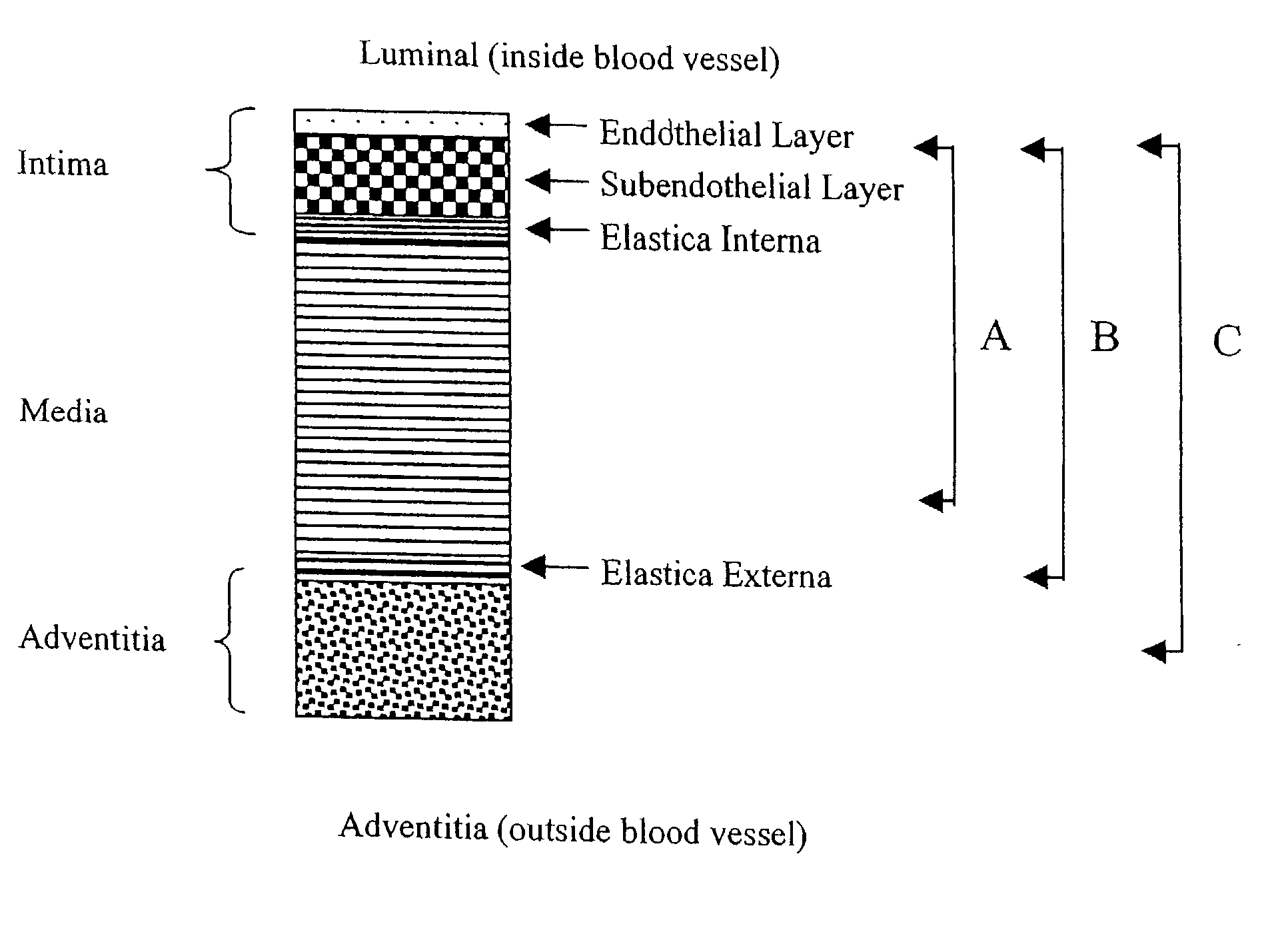Vascular tissue composition
a technology of vascular tissue and composition, applied in the field of tissue materials, can solve the problems of neointimal hyperplasia, chronic inflammation, early and late thrombosis,
- Summary
- Abstract
- Description
- Claims
- Application Information
AI Technical Summary
Benefits of technology
Problems solved by technology
Method used
Image
Examples
example 2
Porcine Artery as Esophageal Graft
[0093] In this study, a composite porcine thoracic aorta was formed by suturing two aorta together laterally at 2 cm in diameter, with epoxy fixation treatments. The composite porcine thoracic aorta had its entire tunica adventitia and endothelial cells removed, and was used as esophageal replacement in 10 mongrel dogs. The graft averaged 7 cm in length. 0% mortality was achieved. Immediately after implantation, a fibrous encapsulation was noted around the graft, which prevents the leakage of air, food, and bacterial from the esophagus into the chest cavity. By two weeks post-procedure, the fibrous tissue on the graft surface had been gradually replaced by host smooth muscle cells. By two months post-procedure, regrowth of the entire smooth muscle conduit was completed. Then, the porcine graft was separated from the muscle conduit and dropped into the stomach. At the end of three months, host epithelial cells had migrated and completed the coverage ...
example 3
Porcine Vein as Stent Covering Graft
[0095] In a first study, porcine vein, harvested from the extremities and neck region, was cross-linked with epoxy. The endothelial cells were removed before chemical cross-linking. All the tunica adventitia and part of the tunica media were carefully removed from the blood vessel using surgical dissecting technique after the completion of the fixation process. The vein was slid on to the outside of a coronary stent (4.0 mm in diameter and 25 mm in length) and then sutured to its proximal and distal edges. A total of 10 vein-covered stents were implanted in iliac arteries of 10 mongrel dogs. At 6 months all stents with porcine cover were patent. The explant showed no signs of thrombus on the luminal surface of the covered stent.
[0096] In a second study, the covering materials were porcine abdominal vein having undergone the same treatment as above. A total of 10 porcine vein-covered stents were evaluated in 10 animals using a nondiseased swine cor...
example 4
Vascular Tissue for Local Drug Delivery
[0098] The coronary stent cover (in Example 3) can be made of double layers of porcine venous tissue. Functional drug or other reagents can be encapsulated within the chamber formed by the two layers of tissue. The vascular tissue behaved like a diffusion membrane which allows drug to be released slowly within a period of time after implantation.
[0099] In one study, Taxol (Taxol 0.5 mg) was loaded between two layers of porcine tissue on a standard coronary stent. The covered stent with drug was delivered into a porcine coronary artery. The drug was gradually released to the diseased artery and further inhibited the growth of smooth muscle cells.
PUM
 Login to View More
Login to View More Abstract
Description
Claims
Application Information
 Login to View More
Login to View More - R&D
- Intellectual Property
- Life Sciences
- Materials
- Tech Scout
- Unparalleled Data Quality
- Higher Quality Content
- 60% Fewer Hallucinations
Browse by: Latest US Patents, China's latest patents, Technical Efficacy Thesaurus, Application Domain, Technology Topic, Popular Technical Reports.
© 2025 PatSnap. All rights reserved.Legal|Privacy policy|Modern Slavery Act Transparency Statement|Sitemap|About US| Contact US: help@patsnap.com


